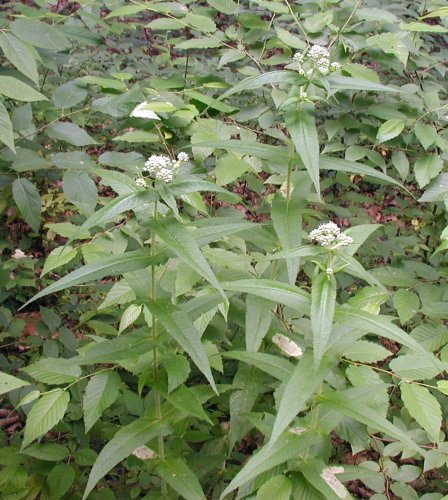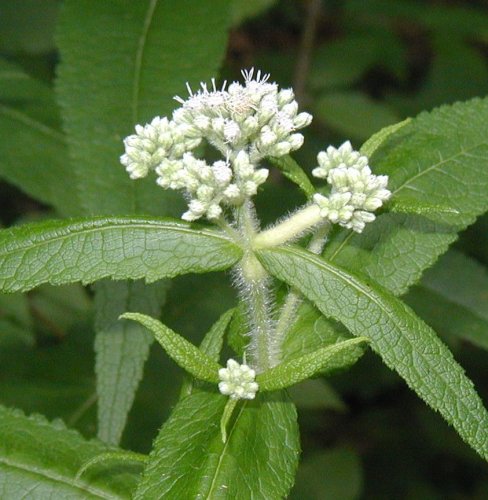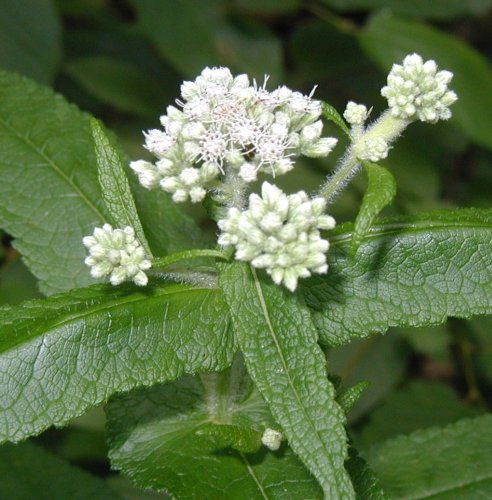Who’s your neighbor, Boneset?
A fault, I find, of many field guides is that the neighboring plants of the one you’re reading about are not usually mentioned. OK, maybe it’s not a fault, but it sure would make a nice addition to list some of the ‘cohorts’ or associates that may be found with a particular plant.
I suppose the lists of associated plants would become too long to be useful. The plants growing alongside Boneset here may not be in the locations where you see it. Still, I can see that if you recognize the habitat where your plant is growing, you can learn about other inhabitants of that ecosystem. Then it would be easier to recognize individuals in that community of plants in the future.
Take our perennial Boneset, for example. At three to four feet tall the clusters of white blooms really stand out. Even more recognizable are the opposite pairs of perfoliate leaves that appear to be joined at the base. Once you see those leaves as the plant is growing, there’s no mistaking it. Boneset grows up in July and flowers in August to September.

Three perennial boneset plants starting to flower.


Flowers starting to open on the Boneset.
(Photos taken 2 August 2008.)
Growing along the lane our Boneset is growing in a wet area, often near running water as rain water and runoff is funneled off of the dirt road in that location. We’ve had a relatively wet year as the spring at the lower section of the lane has not totally dried up as it often does by this time of the year. Not such an excess of rain, but often we’ve had night-time downpours.
Growing around Boneset, Eupatorium perfoliatum, we have White Snakeroot, Jewelweed or Spotted Touch-Me-Not, and Blackberries. White Snakeroot, Eupatorium rugosum, and Jewelweed, Impatiens capensis, are described in the Peterson Field Guide on Eastern-Central Medicinal Plants as growing near running water.
The last two years were much drier and I don’t recall seeing Boneset flowering at all. Snakeroot did, but not with as much gusto as I’m seeing this year.
The blackberries are more aggressive and will grow in drier locations in the woods as long as they can get the sunshine they need. Plants that might be called generalists, those that can live in many places, like the berries, are not good cohort indicators. Although you have to take caution here as this wetter year has produced an abundance of huge, sweet berries in the locations near the Boneset. We’ve enjoyed the blackberries thoroughly!
WildeBerry Ice Cream, anyone?